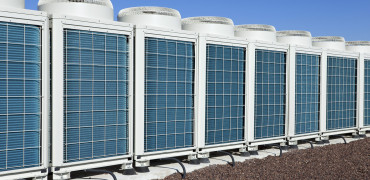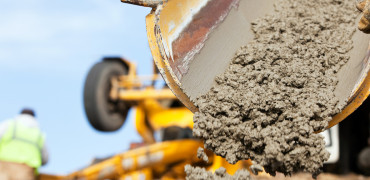Global decarbonisation is a priority for 2021. With global emissions up by two thirds over the past 30 years, it's time for a radical cutback.
We need a new approach that creates incentives for leaders in nations and industries that will ignite transformative technological revolutions to deliver on this.
As shown by our previous Hub article, in 2019, the UK became the first major economy in the world to pass laws to end its contribution to global warming, by committing to be NetZero by 2050.
The roadmap identified seven ways of decarbonising the industry to go ‘beyond net-zero’ by 2050. These include running production plants and supply chains on renewable energy, using nascent carbon-capture technologies and taking into account how concrete and cement structures absorb carbon over their lifetimes.
Richard Leese, director of industrial policy at the Mineral Products Association (MPA), which represents the UK's cement industry, said that the industry ‘can go beyond net-zero if we have a fair wind and all the right enablers from governments and the technological development that we hope will occur.
For our decarbonisation journey, we've got to get the designers and structural engineers to take on board the new products.’
Therefore, taking significant cuts in greenhouse gases is essential to change behaviour to start decarbonising the global economy.
We are convinced that the best product must fit the clients need but also respect the environment.
A UK cement industry roadmap
The UK cement industry has set out a roadmap to ‘go beyond net-zero’ by 2050. Cement production could become a zero-carbon emission industry in the UK, and producers are now testing low-carbon concrete recipes.
According to a landmark 2018 report by Chatham House, cement is responsible for around 8% of global emissions, making it the single-largest industrial source of atmospheric CO2.
The seven ‘levers for change’ to decarbonise the UK sector are set out in the UK Concrete and Cement Industry Roadmap to Beyond Net Zero, published last October by the MPA.
The document claims the UK industry, which produces 90 million tonnes of concrete each year, has "already delivered a 53% reduction in absolute carbon dioxide emissions since 1990."
This has been achieved by moving away from fossil fuels to power production and by using ‘secondary cementitious materials’, including industrial byproducts, such as fly ash and ground granulated blast furnace slag, to replace clinker made by burning limestone.
As a result, emissions from the sector today represent 1.5% of all UK emissions rather than the 8% global average, the MPA claims.
Cement production ‘needs to be net-zero’
‘We've done the low-hanging fruit’ said Jenny Burridge, a principal structural engineer at the MPA's Concrete Centre in London. ‘We need to be net-zero’ she added.
‘To get from one and a half percent of the total to nothing is quite a big thing to have to try and do. So this is going to be the more difficult bit.’
As part of the plan, the Hanson Cement plant at Ribblesdale in North Yorkshire is about to trial the use of hydrogen and biomass to power its kilns.
The experiment will see the percentage of low-carbon fuels slowly increase up to around 30% of the total fuel mix.
‘World's first carbon-neutral cement plant’ to be built in Sweden
Sweden will host the World's first carbon-neutral cement plant.
That's something revolutionary, announced by Cement giant Heidelberg Cement, which is planning to eliminate carbon emission from a plant in Sweden in a bid to decarbonise one of the most polluting industries existing.
HeidelbergCement is currently the second-largest source of greenhouse gas emissions in Sweden, responsible for 3% of all its CO2 emissions.
That's why this announcement is not only a significant sign of the current mindset, but an essential step ahead in making the place a better place.
The upgrade is planned for 2030, and the project is very ambitious, as the company claims it will capture and store all emissions, totalling up to 1.8 million tonnes of CO2 per year.
"There are many potential technology providers in this area to be assessed," Brevik told Dezeen. "Most probably, we will go for amine technology," he said, referring to chemical compounds that can absorb CO2 from gases.
Amine processes are used to scrub carbon from factory fluids, although the technology is expensive and cannot remove 100 percent of emissions.
The technology that will be used to capture the emissions is "not decided yet," according to Per Brevik, director of alternative fuels at HeidelbergCement. Once captured, the carbon dioxide will be buried under the North Sea in cavities created by the extraction of fossil fuels.
In this journey to a carbon-neutral cement, we can't neglect its enormous influence on specific areas like the hotel, education, health and leisure sectors and the built environment that would be directly involved in this process.
At Mitsubishi Electric, we are already striving to make the buildings we deal with as sustainable as possible by helping, with our products, to reduce buildings' energy consumption, lower carbon emissions, and lower running costs.
We are convinced that the best product must fit the clients need but also respect the environment.
With this in mind, we keep ourselves updated about the different evolving technologies to decarbonise the industries - which will in turn, make the planet a better and safer place.
It’s time to start our journey into decarbonisation.
James Smurthwaite is Business Development Manager



